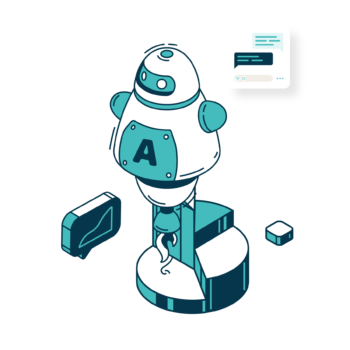Last week, we joined the ChatGPT conversation currently taking over the internet and discussed its importance in the process of content creation. Used by marketing agencies, start-up businesses and even web developers, ChatGPT is fast becoming an essential tool to have in your marketing strategy.
Despite this, many are still unsure of how to use the platform properly. Fortunately, our WebsiteforBookings team has done the work for you, and we’re now sharing our own findings with you in this article!
Our Framework for using AI content generators, including ChatGPT
Debates about AI replacing human writers aside, creating accurate and engaging content for readers still requires human input. AI generates content based on user prompts, gathering relevant information from its database and forming a readable structure. As a result, rather than two beings in competition, there is a mutual relationship between AI and its human user, allowing both to expand their knowledge simultaneously.
Keep on reading to find out more about the framework we’ve developed to create valuable content using AI technology.
1. Research
Hubspot’s Cluster Technique
To create content that is consistent with our brand strategy, we use HubSpot’s Cluster technique. The technique involves writing one main blog post and 3-6 smaller posts that delve into the main post’s topics. This method allows us to structure our content around marketing pillars established in our overall marketing strategy.
Keyword Research
Use SEO / keyword research tools like AIPRM and Ahrefs to find key words that your audience may be using to look for a specific product or service. Using the appropriate key words in your marketing strategy can help you appear higher on search engines, with better probability of acquiring high-quality customers from organic website traffic.
Competitor Research
Check competitor blogs and pages for inspiration. Conduct thorough research on the competitor’s blog posts and identify the common topics, styles, and formats they use.
To conduct effective competitor research, identify common complaints about your competitors and use this feedback to create a marketing strategy that addresses these issues and converts their audience to your services.
You can find a list of relevant competitors through Google search or on relevant association websites, e.g. the ASAP website. You may also want to use the AIPRM plugin ‘outrank article’ feature as a starting point for your research.
2. Topic Selection
Choose a topic that is relevant to your brand services, current trends, customer demands and business goals.
You may use keyword research tools or Google Trends to find topics that audiences may be interested in, but we particularly recommend developing a social monitoring strategy as your main process. This will allow you to identify topics that your own audience wants to learn more about by finding out what they think about your company, brand and services.
When you have learned more about your audience, you can begin creating content with keyword research and AI content generator tools. By imputing specific prompts into these tools, you can get more accurate and engaging information, which your audience is likely to find more valuable.
3. Content Creation
We’ve used ChatGPT and WriteSonic as both research tools and content generators to build a better database of information faster than usual.
When you have successfully identified your competitor’s pain points through primary research, you can start to create content that specifically targets these issues. ChatGPT and WriteSonic can then write blog posts and social media content based on the selected topic and competitor research.
Make sure to include important details about the business, its services, and how it differs from its competitors across your various content products.
Subscribe to our newsletter and be sure to read our blog post next week to learn the next steps to successfully introducing AI into your content production strategy!

Upgrade Your Accommodation Services with AI Today!
Boost Efficiency and Delight Guests with Cutting-Edge Technology.







